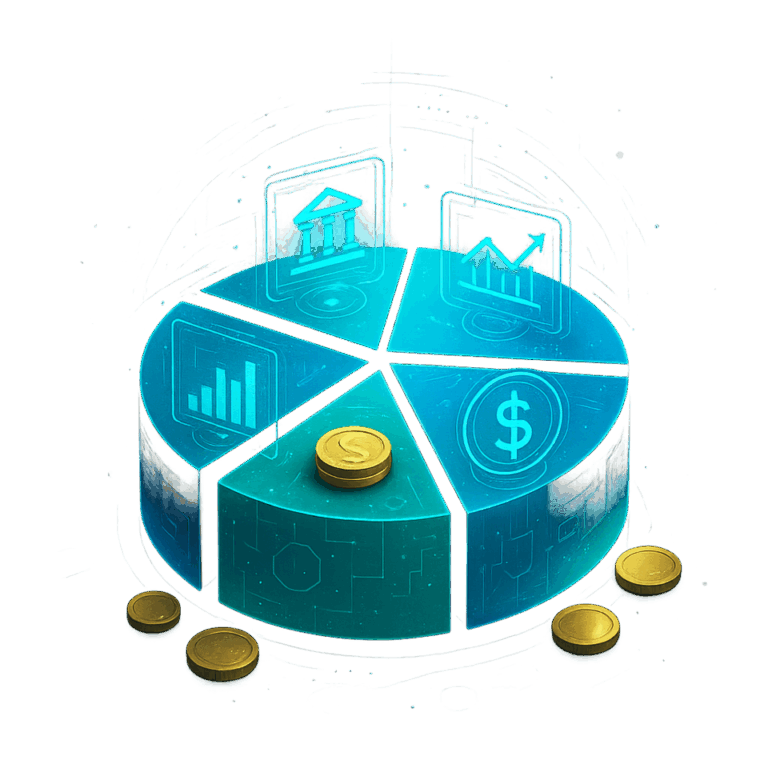As we enter 2025, stablecoins have evolved from experimental crypto tools into a cornerstone of global digital finance. They represent a bridge between the volatility of cryptocurrencies and the reliability of traditional money, providing stability in an increasingly digitized economy.
Originally designed to facilitate crypto trading, stablecoins now serve as a foundation for cross-border payments, decentralized finance (DeFi), and digital banking. Governments, corporations, and consumers alike are exploring their potential to modernize financial systems while maintaining stability and trust.
In 2025, the question is no longer whether stablecoins will influence global finance—but how deeply they will integrate into everyday transactions, regulation, and monetary policy.
Understanding Stablecoins: A Hybrid Financial Instrument
What Are Stablecoins?
Stablecoins are digital currencies pegged to a stable asset, such as the U.S. dollar, the euro, or even gold. Their goal is to combine the efficiency of blockchain transactions with the price stability of fiat currencies.
They come in three main categories:
-
Fiat-collateralized (backed by reserves of traditional currency, e.g., USDT, USDC)
-
Crypto-collateralized (backed by other cryptocurrencies, e.g., DAI)
-
Algorithmic or non-collateralized (stabilized by smart contract algorithms adjusting supply)
While early algorithmic models faced setbacks, 2025 has brought more sophisticated hybrid systems that combine transparency, regulation, and decentralized architecture.
Why Stablecoins Matter
Stablecoins address one of the biggest challenges in crypto adoption: volatility. By maintaining a stable value, they enable real-world applications like remittances, savings, and digital commerce—areas previously limited by traditional banking inefficiencies.
They also act as a gateway between traditional and decentralized finance, facilitating liquidity, accessibility, and trust in a new digital monetary ecosystem.
Stablecoins and the Transformation of Global Finance
The Role of Stablecoins in Cross-Border Payments
International money transfers have historically been slow and expensive, especially for developing countries. Stablecoins are now revolutionizing remittances, allowing instant, low-cost transfers without intermediaries.
For example, workers in the United States can send digital dollars to families in Latin America within seconds, avoiding high bank fees and exchange rate losses. These transactions are powered by blockchain networks like Stellar, Polygon, and Solana, which handle high volumes with minimal transaction costs.
Integration with Traditional Banking
In 2025, several major banks and payment companies have begun integrating stablecoins into their systems. These partnerships enable:
-
Faster settlements between financial institutions.
-
Tokenized deposits backed by central bank reserves.
-
Hybrid accounts where users can hold both fiat and stablecoin balances.
This integration reduces friction in the global payment system, creating a financial network that is both compliant and efficient.
Stablecoins and Central Bank Digital Currencies (CBDCs)
The relationship between stablecoins and CBDCs has become one of collaboration rather than competition. While CBDCs represent government-backed digital currencies, stablecoins provide flexibility and innovation from the private sector.
In many regions, CBDCs serve as settlement layers, while regulated stablecoins function as retail-facing products, expanding financial inclusion. This public-private partnership model is shaping the next phase of digital money infrastructure.
Regulation and Trust in the Stablecoin Era
The Push for Transparency
After several high-profile collapses in the early 2020s, regulators demanded stricter rules for stablecoin reserves and disclosures. In 2025, major issuers must now:
-
Conduct real-time audits verified by third parties.
-
Hold 1:1 collateral reserves in regulated institutions.
-
Publish monthly transparency reports accessible to the public.
This enhanced oversight has boosted investor confidence and encouraged institutional adoption.
Global Regulatory Frameworks
Governments across North America, Europe, and Asia have introduced comprehensive frameworks for stablecoin issuance and circulation.
For example:
-
The U.S. Stablecoin Regulation Act of 2024 mandates full collateralization and regular reserve reporting.
-
The European Digital Assets Framework (EDAF) sets strict standards for stablecoin transparency and consumer protection.
-
Asian markets, led by Singapore and Japan, are focusing on interoperability and cross-border integration.
The result is a global regulatory environment that promotes stability while allowing innovation to thrive.
The Role of Decentralized Governance
Not all stablecoins rely on centralized issuers. Decentralized projects like DAI and FRAX continue to lead innovation by using algorithmic stabilization mechanisms governed by decentralized autonomous organizations (DAOs).
In 2025, DAOs are required to operate under transparent smart contract audits, aligning decentralized innovation with legal compliance.
The Economic Impact of Stablecoins in 2025
Boosting Financial Inclusion
Stablecoins are empowering individuals in emerging markets who lack access to traditional banking. By enabling transactions via smartphones, they are closing the financial inclusion gap.
People in inflation-prone economies like Argentina, Turkey, and Nigeria are increasingly adopting USD-backed stablecoins to protect their savings against currency devaluation.
This trend has significant macroeconomic implications—stablecoins are becoming a digital dollarization tool, allowing users to bypass unstable local currencies without relying on physical cash.
Corporate Adoption and Treasury Management
Corporations are also leveraging stablecoins for instant settlements, payroll, and international trade. Instead of waiting days for wire transfers, companies can now move millions in seconds while maintaining full auditability through blockchain records.
Treasury departments are exploring stablecoins as liquidity management tools, particularly for short-term reserves and intercompany transactions.
The Rise of Tokenized Assets
Stablecoins are paving the way for tokenized financial instruments, where real-world assets—stocks, bonds, and commodities—are represented on blockchain. These digital representations can be traded 24/7, settled instantly, and fractionally owned, expanding access to investment opportunities.
In this ecosystem, stablecoins act as the primary settlement currency, ensuring price stability and liquidity.
Risks and Challenges
Reserve Management and Liquidity Risk
Even with regulation, stablecoins remain vulnerable to liquidity crises if reserves are mismanaged or redemption demands spike. Maintaining full collateralization is essential to preserve confidence.
In response, some issuers have diversified reserves into short-term Treasury bills and insured bank deposits, balancing yield with safety.
Technological and Cybersecurity Risks
While blockchain provides transparency, it is not immune to hacks or vulnerabilities. Smart contract exploits and security breaches can lead to loss of funds.
As a result, insurers and cybersecurity firms are now offering digital asset protection policies, covering both retail and institutional investors.
Regulatory Arbitrage and Fragmentation
Global differences in regulation can create inconsistencies in how stablecoins operate across jurisdictions. Cross-border interoperability remains a challenge, with different standards for reserve audits, taxation, and reporting.
Efforts by international organizations like the Financial Stability Board (FSB) and Bank for International Settlements (BIS) aim to harmonize these frameworks.
The Future of Stablecoins: What Lies Ahead
Stablecoins as Global Payment Standards
By 2025, major e-commerce and fintech platforms are already accepting stablecoins alongside traditional payment methods. This shift suggests a future where digital currencies coexist with fiat as standard instruments for global commerce.
Platforms such as PayPal, Stripe, and Shopify now integrate stablecoin payments natively, allowing merchants to reach customers worldwide without currency conversion barriers.
Integration with Artificial Intelligence
AI is playing a growing role in stablecoin infrastructure. Algorithms now manage reserve balancing, fraud detection, and transaction optimization in real time.
Predictive analytics also enable issuers to forecast liquidity needs and adjust collateral strategies dynamically—reducing systemic risks.
The Next Generation: Programmable Money
Stablecoins are evolving into programmable assets—currencies that can execute conditional payments, enforce compliance, or distribute funds automatically.
This functionality opens new opportunities in:
-
Decentralized finance (DeFi) for yield generation and lending.
-
Supply chain automation, where payments trigger upon delivery verification.
-
Government aid distribution, ensuring transparency and traceability.
The Convergence with Tokenized Banking
Banks are experimenting with tokenized deposits, representing customer funds on blockchain networks. These deposits function similarly to stablecoins but are fully integrated within the banking system.
The convergence of regulated stablecoins and tokenized banking could redefine monetary systems, creating a seamless bridge between traditional finance and the digital economy.
Conclusion
Stablecoins in 2025 represent the most significant milestone in the evolution of digital money. They have matured from niche crypto tools into foundational instruments for trade, investment, and inclusion.
By blending the reliability of fiat with the innovation of blockchain, stablecoins are redefining how value moves across borders—faster, cheaper, and with greater transparency.
As regulation strengthens and technology advances, stablecoins will continue to bridge the gap between traditional finance and decentralized ecosystems, shaping the next era of global financial infrastructure.
The path ahead demands balance—between innovation and security, decentralization and regulation—but one thing is clear: stablecoins are here to stay, anchoring the digital economy of tomorrow.



